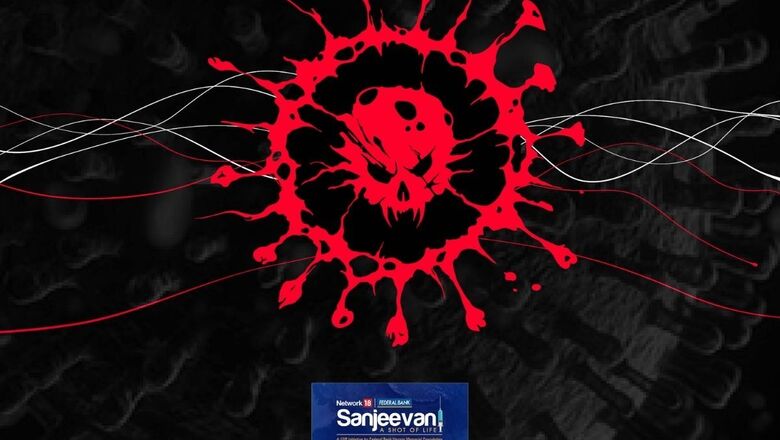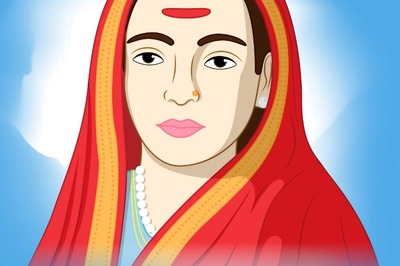
views
Like many other labs, the Centre for Cellular & Molecular Biology or CCMB is involved in genome sequencing and identifying the variations in the genome of the virus, SARS-CoV-2. The CCMB also explores if these variants are of interest and concern. The CCMB has been at it since the beginning of this pandemic. It is also a part of INSACOG (Indian SARS-CoV-2 Genomic Consortia), a consortium of 10 national labs, which is closely monitoring the different virus variants across the country.
Our first task is to try and prevent a new variant from entering larger communities. For instance, if any international traveller who comes to Hyderabad and tests positive for COVID-19, their sample is sent to CCMB for sequencing to find out the type of variant. Based on that, a decision is taken if the person will be sent to institutional quarantine or home quarantine. We have identified hundreds of samples with the UK variant—thereafter, the person was prevented from mingling with a larger community and spreading the infection. In fact, Telangana has done pretty well in terms of containing the spread of the UK variant; in Punjab, however, the UK variant has sneaked into communities after cases went undetected at the airport.
Second, when we find a variant of concern, then we culture it in the lab and understand if this virus has any features that we need to worry about. We can then ask if the virus will respond to the vaccine, if it will have any tendency to re-infect more than the existing variants. We are currently doing this study for B.1.617 (popularly known as the Indian double mutant).
In the coming few days, we would know if we need to worry about this variant. Having said that, at the moment, it does not look like B.1.617 will be a major concern because we have not noticed many re-infections, which is one indication of vaccine protection.
Vaccines and Virulence
Virulence and vaccines are different things. Virulence means how efficient the virus is in spreading. Vaccine may offer protection against a variant, which could be very virulent. So, people not protected by the vaccine can get easily infected—even those vaccinated may get infected, but they will be protected against severity of the disease and hospitalization.
What we are testing is—will vaccines/immunity gained by prior infection protect us from this variant, and if this protection is compromised, and to what degree. This experiment will not tell you if B.1.617 is more infectious or virulent, that data will come from epidemiology.
But what we have to do with this variant, as we have done with other variants, is break the chain—mask up and practice social distancing.
Variants & Waves—The Natural Course
Viruses mutate all the time, but most of them are of no consequence. Only when some of them start becoming more visible, we say this is a variant of concern or a variant of interest. A couple of months ago, when we analysed about 6000 Indian isolates (samples), we found more than 7,500 variants—when a virus is there, variants will be there every next day.
We know there is only one way a variant expands its domain, we know that and we can block that. For instance, the UK variant became a problem in the UK, and the country enforced restrictions, lockdown, and expedited vaccination, and now, the chain of transmission has been broken. The variant will do its job, but human behaviour is the key factor. With so many big events happening simultaneously—elections, religious gatherings, marriages—a surge in infection was expected, no matter which variant caused it.
And, these waves of infection will reoccur. But the height or intensity of the wave will depend on human behaviour. People will hopefully see the other side of the current peak, provided they follow COVID-appropriate behaviour.
My biggest worry, however, is that now India is set to have the largest collection of this virus. More people getting infected means more chances for the virus to mutate. Among millions of variants, there can be that one lethal variant which is resistant to vaccines. Therefore, it is important to prevent the spread of this virus.
Sequencing it Right
There are two things to consider: how many samples should be sequenced and how should these samples be selected?
Generally, 5 per cent is a good number, but even if we sequence 2-3 per cent of the total samples (cases reported in a day), we will be in a good position to detect a variant early. We have the capacity to undertake sequencing at this scale, provided samples reach the lab, which is a logistics issue. Hospitals are already stretched to the limit and segregating samples, preserving them and sending it to national laboratories is one more job for these hospitals, which are struggling to save lives.
The second part is how to select the samples for sequencing. We cannot have large number of samples from the same locality. These samples should be from different geographical locations—they should not just come from cities, but smaller towns as well, because variants of concern can be reported from anywhere. Relevant samples should also come from airports, super-spreader events, cases of re-infection.
Having said that, we are working in that direction—we did identify the double mutant. But, of course, we should be doing it extensively because it will help us detect a new variant early, nip it in the bud and not allow it to spread.
B.1.617 & Vaccine Efficacy
The B.1.617 variant has spread to 7-8 states. Besides Vidarbha, we have also found it in the samples we sequenced from Nagpur. It has been found in Telangana and Andhra Pradesh too, but less than 2 per cent of the COVID cases reported from these states have been caused by this variant.
As part of our study on B.1.617, we are sequencing samples from airports, hospitals as well as cases of re-infection to understand how this variant behaves, if it is showing any new feature or a feature that resembles another variant. We are culturing isolates from multiple patients, we will infect the cells with the virus and simultaneously add serum from a patient who has recovered from the infection or who has taken both doses of the vaccine. If the virus stops growing once the serum is added, it means vaccines are working. We will know the results in a week or two.
Read all the Latest News, Breaking News and Coronavirus News here. Follow us on Facebook, Twitter and Telegram.















Comments
0 comment